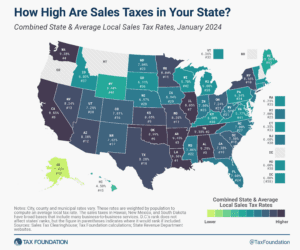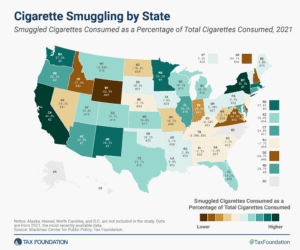How Are Remote and Hybrid Workers Taxed?
Working from home is great. The tax complications? Not so much.
4 min readHow does South Carolina’s tax code compare? South Carolina has a graduated state individual income tax, with rates ranging from 0.00 percent to 6.40 percent. South Carolina has a 5.0 percent corporate income tax rate. South Carolina also has a 6.00 percent state sales tax rate and an average combined state and local sales tax rate of 7.50 percent. South Carolina has a 0.46 percent effective property tax rate on owner-occupied housing value.
South Carolina does not have an estate tax or inheritance tax. South Carolina has a 28.75 cents per gallon gas tax rate and a $0.57 cigarette excise tax rate. The State of South Carolina collects $4,375 in state and local tax collections per capita. South Carolina has $7,260 in state and local debt per capita and has a 60 percent funded ratio of public pension plans. Overall, South Carolina’s tax system ranks 29th on our 2024 State Business Tax Climate Index.
Each state’s tax code is a multifaceted system with many moving parts, and South Carolina is no exception. The first step towards understanding South Carolina’s tax code is knowing the basics. How does South Carolina collect tax revenue? Click the tabs below to learn more! You can also explore our state tax maps, which are compiled from our annual publication, Facts & Figures 2024: How Does Your State Compare?

Working from home is great. The tax complications? Not so much.
4 min read
Retail sales taxes are an essential part of most states’ revenue toolkits, responsible for 32 percent of state tax collections and 13 percent of local tax collections (24 percent of combined collections).
9 min read
Graduated corporate rates are inequitable—that is, the size of a corporation bears no necessary relation to the income levels of the owners.
7 min read
The pandemic has accelerated changes to the way we live and work, making it far easier for people to move—and they have. As states work to maintain their competitive advantage, they should pay attention to where people are moving, and try to understand why.
5 min read
Thirty-four states will ring in the new year with notable tax changes, including 15 states cutting individual or corporate income taxes (and some cutting both).
17 min read
People respond to incentives. As tax rates increase or products are banned from sale, consumers and producers search for ways around these penalties and restrictions.
17 min read
Contrary to initial expectations, the pandemic years were good for state and local tax collections, and while the surges of 2021 and 2022 have not continued into calendar year 2023, revenues remain robust in most states and well above pre-pandemic levels even after accounting for inflation.
4 min read
The latest IRS and Census data show that people and businesses favor states with low and structurally sound tax systems, which can impact the state’s economic growth and governmental coffers.
7 min read
To alleviate the regressive impact on wireless consumers, states should examine their existing communications tax structures and consider policies that transition their tax systems away from narrowly based wireless taxes and toward broad-based tax sources.
18 min read
What do The Rolling Stones, NFL star Tyreek Hill, and Maryland millionaires have in common? They all moved because of taxes.
4 min read